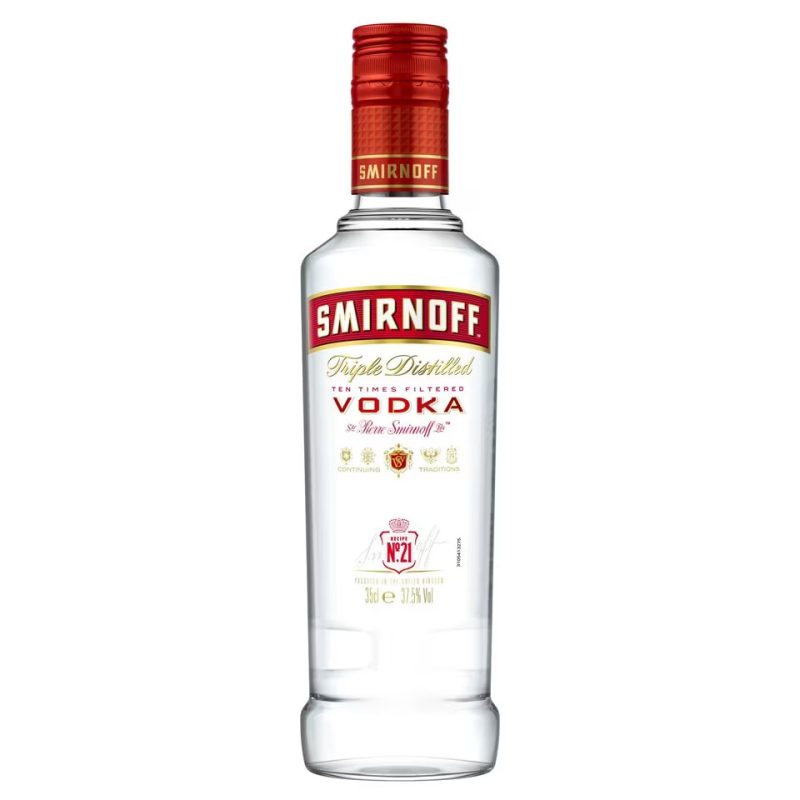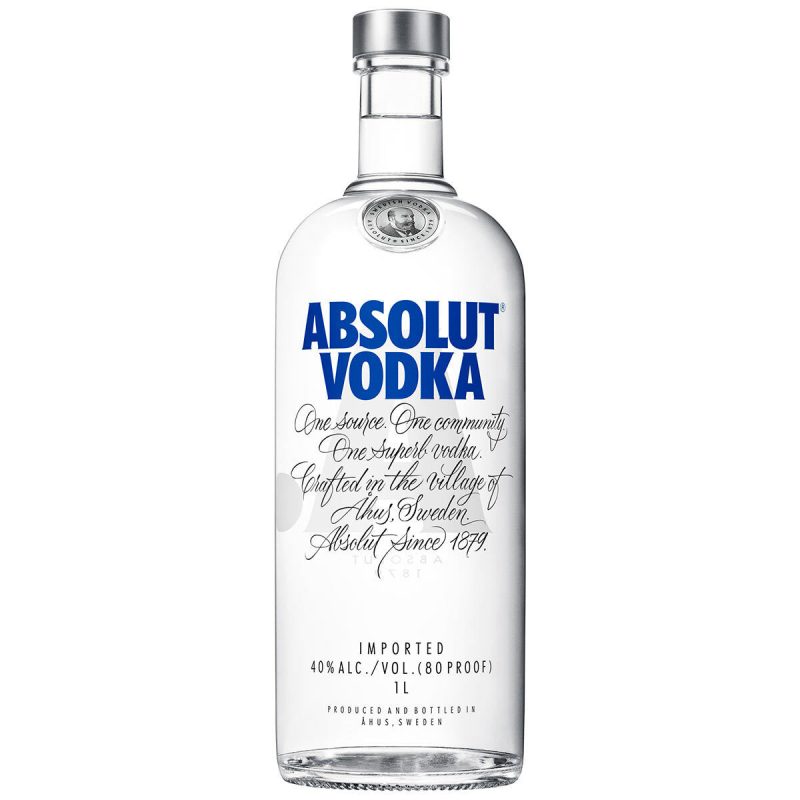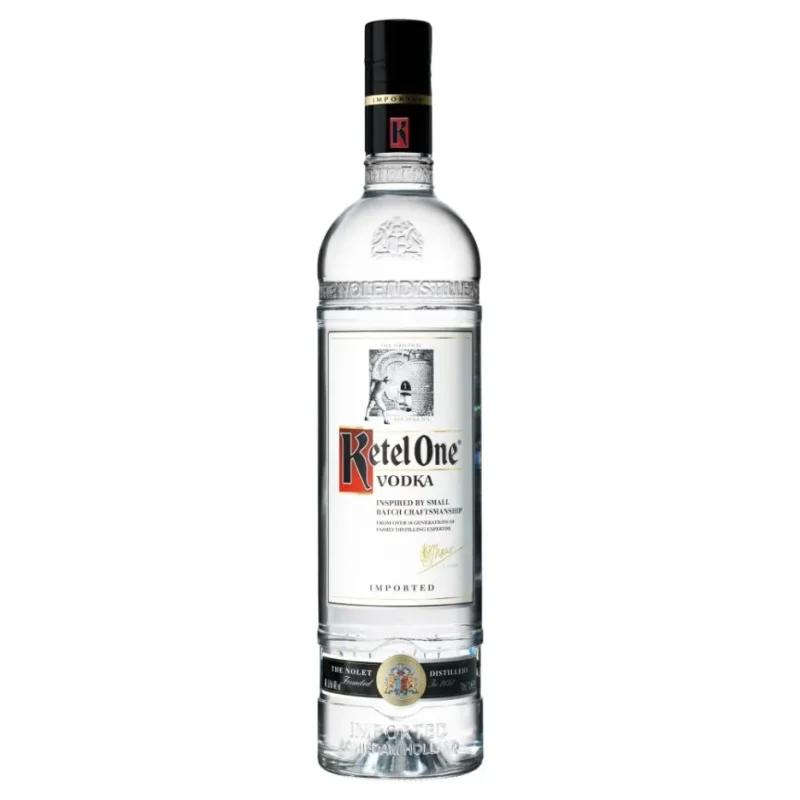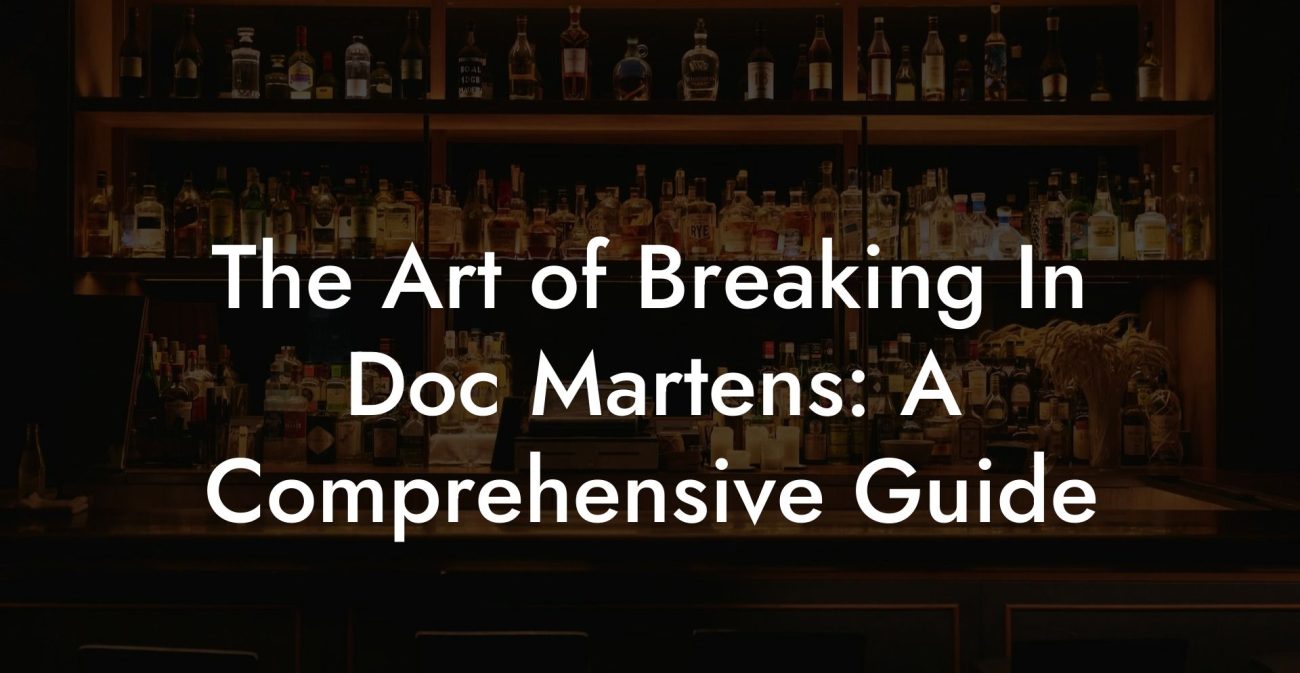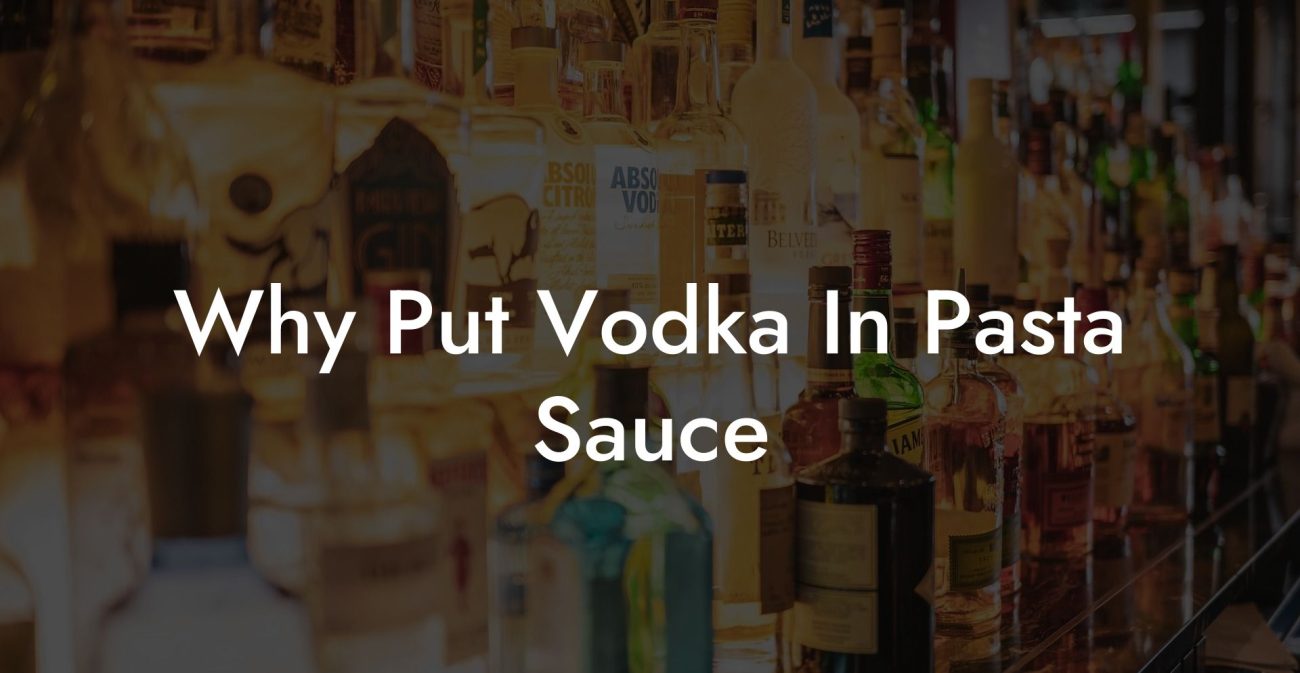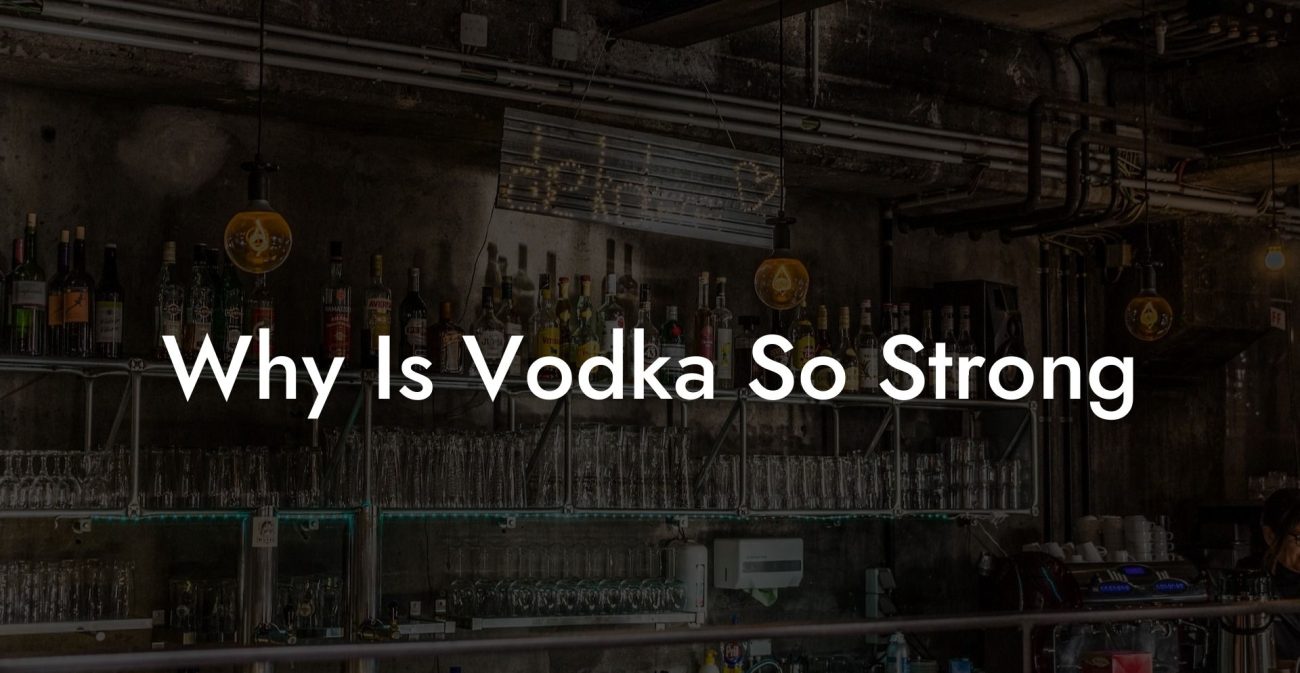Ever wondered how that iconic clear spirit ends up in your cocktail, liberating your taste buds and sparking late-night conversations? Welcome to the fascinating, sometimes quirky, world of vodka production—a journey that travels from humble beginnings in far-flung fields to the gleaming stills of modern distilleries. Buckle up for an in-depth exploration that’s equal parts science, art, tradition, and a dash of millennial irreverence.
Vodka How Is It Made Table of Contents
From Grain to Glory: The Ingredients That Make Vodka Tick
The Art and Science of Distillation
Filtering the Elixir: The Final Touches
Vodka Production and Sustainability: A Modern Twist on Tradition
Mastering the Vodka Tasting Experience
Vodka in Pop Culture: Crafting a Lifestyle
Resources and Community Support: Your Next Steps in the Vodka Journey
Your Personalized Vodka Journey: Experiment, Savor, and Share
Vodka How Is It Made? – Frequently Asked Questions
Embarking on Your Vodka Adventure
Looking For The Best Vodka? You'll Love These Vodka Guides...
The Humble Origins of Vodka
Vodka might seem like a modern staple at every trendy bar or posh cocktail party, but its history is as intriguing as it is murky. With roots that intertwine Eastern European tradition and centuries-old distillation techniques, vodka has evolved from a rustic remedy to a global phenomenon. While the exact birthplace is hotly debated—some argue for Russia, others champion Poland—one thing’s for sure: vodka’s journey from a peasant’s potion to a millennial must-have is nothing short of epic.
Early vodka production was more about necessity than enjoyment. Farmers and apothecaries used rudimentary stills to create a spirit that was intended to disinfect wounds and ward off evil spirits. Fast-forward a few centuries, and vodka began its evolution into a beverage synonymous with celebration and sophistication. From royal courts to underground speakeasies during prohibition, vodka has been reinvented time and again, each iteration adding a layer of complexity to its character.
So, whether you’re sipping it neat or swirling it into a creative cocktail, remember that each drop carries a legacy of innovation and adaptation—a spirit forged by history, technology, and a healthy dose of accidental brilliance.
From Grain to Glory: The Ingredients That Make Vodka Tick
What does it take to create the crystal-clear magic of vodka? Surprisingly, it all starts with a few simple ingredients and a whole lot of chemistry. Traditional vodka ingredients vary by region and producer, but the basics remain largely similar: a fermentable base (think grains, potatoes, or even grapes), water, and yeast.
The Base: Grains, Potatoes, and Beyond
The most common base ingredient for vodka is grain—typically wheat, rye, or corn. Each grain lends its own subtle flavor profile to the vodka, influencing the final taste in ways that even the most discerning palate might detect. Rye-based vodkas are often touted for their spicy complexity, while corn-based varieties tend to be sweeter and smoother.
Best Budget Vodkas Ranked
Not a fan of grains? No worries—vodka can be made from potatoes too, a tradition that’s especially popular in parts of Eastern Europe. Potato vodkas bring a distinctive, earthy character to the table, offering a richer texture and an alternative taste profile that stands apart from its grain-based cousins. And for the adventurous, there are even vodkas made from fruits, legumes, and other innovative ingredients.
Water: The Unsung Hero
Water might be the most underrated ingredient in vodka production. It’s the primary diluent, transforming intensely concentrated alcohol into a refreshingly smooth spirit. The quality of water used plays a crucial role in the final product, making the source—whether from pristine glacial streams or local wells—a key part of a vodka’s unique identity.
Yeast and Fermentation: Brewing the Buzz
Yeast is the microscopic dynamo that turns sugar into alcohol. During fermentation, yeast converts the natural sugars present in the base ingredient into ethanol and carbon dioxide. This process not only produces alcohol but also forms the flavor foundation of the vodka. Although most of these flavors are later stripped away during distillation, the type of yeast and the conditions of fermentation can impart subtle nuances that persist through the final distillation and filtration steps.
Fermentation times and conditions vary; some distilleries favor a slow, traditional fermentation process that can last up to a week, while others employ modern techniques to speed things up. No matter the approach, this stage is where the magic—or should we say, the science—of vodka really begins.
The Art and Science of Distillation
Now, let’s talk about distillation, the pièce de résistance of vodka making. Think of distillation as the ultimate "spiritual" upgrade—where all the raw, unrefined flavors and impurities are stripped away, leaving behind a silky, pure spirit.
How Distillation Works
Distillation is essentially a separation process that relies on the different boiling points of liquids. The fermented liquid (or mash) is heated in a still, causing the alcohol, which boils at a lower temperature than water, to vaporize. This alcohol vapor then rises, is collected in a condenser, and cooled back into liquid form. The result? A high-proof liquid that’s far more refined than the original brew.
Modern distilleries often use a series of continuous column stills that allow for repeated distillation cycles—all in the pursuit of creating a spirit that’s as clean and neutral as possible. The more times the vodka is distilled, the purer it becomes. Some premium brands boast as many as five or six distillation cycles, ensuring that every sip is as smooth and free of impurities as can be.
The Role of Temperature
Temperature control is crucial during distillation. Maintaining the right heat allows the spirit to be separated efficiently without burning off desirable compounds. Too hot, and you risk boiling away the delicate aromas; too cool, and impurities might linger, affecting the taste. In essence, distillers must walk a tightrope, balancing science with a bit of artisanal intuition.
For Gen Z and millennial enthusiasts, think of distillation as a high-stakes game of "Extreme Temperatures." It’s where precision meets passion, and every degree counts—literally.
Filtering the Elixir: The Final Touches
Distillation brings us “almost” there. But before vodka can earn its place in your cocktail shaker, it undergoes one more transformation: filtration. This is the stage where any remaining impurities are banished and the spirit is given its trademark clarity.
Charcoal Filtration: Nature’s Purifier
The most popular method is charcoal filtration. Activated charcoal is renowned for its ability to trap undesirables—from traces of congeners to unwanted flavours—leaving behind a crisp, clean spirit. Some distilleries even use multiple charcoal filtration stages to perfect the purity of their vodka.
Picture charcoal as the bouncer at a VIP club, rigorously checking credentials and kicking out any unwelcome elements. The end result is a spirit that’s as smooth as your favorite new playlist.
Additional Techniques and Innovations
Beyond charcoal, some producers experiment with alternative filtration methods, such as quartz sand or even diamond dust (yes, you read that right!). These unique techniques claim to add their own signature touch to the spirit, sometimes enhancing clarity or even subtly influencing flavor. It’s a testament to vodka makers’ willingness to innovate while still honoring a long tradition.
The filtering process is all about refining and perfecting—a final polish that transforms the raw spirit into the iconic vodka you unlock at your local bar.
Exploring the Spectrum: Vodka’s Flavor Profiles & Varieties
Vodka has built its reputation on neutrality, but don’t be fooled—there’s a nuanced world of flavors and profiles hidden beneath that clear facade. The natural tastes and textures of different base ingredients, combined with inventive production methods, have led to an impressive range of vodka styles.
Neutral and Pure: The Classic Vodka
The classic vodka is celebrated for its clean taste and versatility. Ideal for cocktails, it acts as a blank canvas, elevating mixers without overpowering them. The repeated distillation and filtration processes result in a spirit that is smooth, nearly flavorless, and highly adaptable—a favorite among bartenders aiming for mixological brilliance.
Flavored Vodkas: A Twist on Tradition
In recent years, flavored vodkas have taken the spotlight, becoming a playground for creativity. Infusions range from the traditional—like citrus, vanilla, and pepper—to more avant-garde combinations such as cucumber-mint, chili-lime, or even lavender-honey. These flavored variants are perfect for those looking to add a burst of personality to their drinks. They offer a contemporary twist to vodka’s age-old neutrality while providing endless inspiration for new cocktail recipes.
Artisanal and Craft Vodkas
There’s been a booming interest in artisanal vodkas that celebrate local ingredients, sustainability, and small-batch production methods. These craft spirit makers often emphasize traditional techniques and local flavors, appealing to consumers who value authenticity and ethical choices. Their stories are as rich and diverse as the flavors they produce, making every sip an invitation to explore a newfound passion.
Whether you prefer your vodka pure, infused with a twist, or crafted in small, loving batches, the world of vodka offers a vibrant spectrum that caters to every taste and lifestyle.
The Vodka Distillation & Cocktail Culture Connection
Vodka doesn’t just sit pretty on a shelf—it ignites creativity behind the bar. Its neutral profile and smooth character make it the perfect base for an array of cocktails that spark both nostalgia and innovation.
Cocktail Classics Reimagined
From the timeless Bloody Mary and the zesty Moscow Mule to the ever-popular Vodka Martini, vodka is the unsung hero behind countless cocktails. Modern mixologists have taken these classics and reimagined them with contemporary twists, incorporating exotic ingredients, craft syrups, and artisanal garnishes that appeal to the adventurous tastes of millennials and Gen Z.
Imagine sipping a refreshed Moscow Mule served in a vintage copper mug, or a crisp Vodka Martini garnished with a quirky twist—a lemon peel or even a single, edible flower. These cocktails are more than just drinks; they’re a lifestyle statement, mixing tradition with modernity in every sip.
Shot Culture and Social Media Moments
In today’s digital age, vodka has cemented its place in pop culture—from quirky TikTok challenges to Instagram-worthy drink art. Perfect for those who live for the ‘gram, these vodka-based concoctions are designed to be as visually appealing as they are delicious.
Whether you’re at a rooftop party in Brooklyn, enjoying a casual get-together with friends, or curating content for your social feed, vodka cocktails serve up the perfect blend of taste, vibrancy, and style.
Vodka Production and Sustainability: A Modern Twist on Tradition
As consumers become more environmentally conscious, the vodka industry isn’t left behind. Sustainable practices are gradually transforming production methods, from eco-friendly sourcing of ingredients to energy-efficient distillation processes.
Sourcing with a Conscience
Many modern vodka brands are placing an emphasis on local, organic ingredients. Whether it’s non-GMO grains or potatoes grown without harmful pesticides, these choices not only appeal to eco-conscious consumers but also enhance the authenticity and traceability of the final product.
Think of it as a farm-to-bottle journey—each step of the production process is designed to have as little of an environmental footprint as possible, ensuring your favorite spirit is as kind to the planet as it is to your palate.
Energy-Efficient Distillation
Distillation has traditionally been an energy-intensive process. Today, however, innovative distilleries adopt cutting-edge technologies that reduce energy consumption. Techniques such as heat recovery systems, renewable energy sources, and water recycling are becoming the norm, aligning vodka production with the needs of a sustainable future.
This commitment to sustainability reflects a broader industry trend—one where producers not only aim to deliver an exceptional spirit but also take responsibility for the ecological impact of their craft.
Eco-Friendly Packaging
Packaging is another area where sustainable innovation is making waves. From recycled glass bottles to eco-conscious labels and even refillable packaging programs, vodka brands are rethinking the way their products are presented to minimize waste and appeal to a modern, mindful audience.
In a world where every choice matters, these sustainable practices ensure that your vodka indulgence contributes to a healthier planet—one eco-friendly shot at a time.
Case Studies: Vodka Innovations & Brand Stories
Nothing illustrates the passion and innovation behind vodka production better than real-life success stories. Across the globe, small and large brands alike are redefining what it means to produce vodka in the 21st century. Here are a few case studies that capture the creative spirit of this enduring beverage:
Case Study 1: The Rise of a Craft Vodka Vanguard
In a quiet corner of Eastern Europe, a small distillery began experimenting with local rye and traditional techniques passed down through generations. Combining age-old methods with modern sustainability practices, this craft vodka quickly garnered attention for its smooth, complex profile. Today, the brand is celebrated for its commitment to quality and ethical production, resonating with millennials who crave authenticity and a story behind their spirit.
Case Study 2: Reinventing Neutrality with Flavored Vodkas
Innovators in Western markets decided to take a classic formula and add a twist—literally. By infusing vodka with unexpected flavors like yuzu, basil, and even spicy ginger, these brands reinvented what a vodka could be. Their concoctions have become social media sensations, combining vibrant packaging, killer taste profiles, and a quirky aesthetic that appeals powerfully to the Gen Z crowd.
Case Study 3: Embracing Sustainability in Every Drop
A renowned Scandinavian vodka brand has set benchmarks in sustainability. By harnessing renewable energy to power its state-of-the-art distilleries and sourcing water from glacial springs, the brand epitomizes modern eco-conscious production. Their commitment to green practices isn’t just a marketing ploy—it’s integrated into every stage of production, ensuring that every sip is a celebration of both quality and environmental stewardship.
These stories highlight the diverse, innovative paths that vodka producers can take, and they serve as inspiration for anyone interested in the intersections of tradition, creativity, and sustainability.
Mastering the Vodka Tasting Experience
Tasting vodka is an art form—a sensorial journey that challenges preconceived notions about a spirit famed for its neutrality. Whether you’re a seasoned aficionado or a curious newcomer, learning to appreciate vodka’s subtle complexities can transform your drinking experience.
How to Taste Vodka Like a Pro
Start with a clean palate: avoid strong foods or scents that could cloud your judgment. Pour your vodka neat into a tulip glass, which helps concentrate the aromas. Observe its clarity and consistency—these factors can give subtle clues about its production. Then, take a small sip and let it roll across your tongue. Notice any slight notes: are there hints of grain, a touch of pepper, or perhaps an almost imperceptible sweetness?
Engage all your senses. Appreciate the tactile sensation of the spirit—its viscosity and the warmth it leaves behind. Much like a fine wine, vodka invites dialogue: ask yourself, “What flavor profile stands out?” or “How does it finish?” Experimenting with different temperatures (room temperature vs. chilled) can also further reveal its character.
Pairing Vodka with Food
Vodka, with its neutral canvas, offers a versatile pairing with many flavors. Consider pairing a high-quality vodka with deli meats, smoked fish, or even spicy snacks. The saltiness of a cured sausage, for example, can elevate the subtle nuances of rye-based vodka, creating a balanced culinary experience.
For those who enjoy a more interactive tasting session, organize a vodka and bite party with friends. Set up small tasting stations, each featuring a different vodka and an accompanying light snack. Not only does this highlight vodka’s versatility, but it also transforms tastings into a social, creative event.
Vodka in Pop Culture: Crafting a Lifestyle
Vodka has transcended its role as a simple spirit to become a cultural icon. It’s featured in films, television shows, and even meme culture—a true multi-dimensional celebrity. This evolution isn’t just about the drink; it’s about the lifestyle that surrounds it.
From Film and Music to Social Media
Ever notice how a sleek bottle of vodka makes a cameo in every stylish spy movie or edgy music video? This isn’t a coincidence. Vodka represents sophistication, rebellion, and self-expression—all qualities that resonate with a generation that values individuality and authenticity. Social media influencers and celebrities alike have played a significant role in elevating vodka from a mere beverage to a symbol of a cosmopolitan lifestyle.
Whether you’re scrolling through your Instagram feed or catching the latest viral video on TikTok, vodka’s slick imagery and versatile persona make it a favorite subject in modern pop culture.
Creating Your Own Vodka Rituals
Cultivating a vodka ritual can be as exciting as discovering a new band or curating your unique fashion style. Experiment with creative cocktail recipes, try a vodka infusion at home, or simply savor it neat during a quiet moment after a long day. These small rites turn drinking into an experience, blending tradition with personal modern flair.
In today’s world, your drinking experience can be a canvas for self-expression. Let every sip be a celebration of both your cultural heritage and your unique, forward-thinking identity.
Resources and Community Support: Your Next Steps in the Vodka Journey
Now that you’re armed with the inside scoop on how vodka is made, it’s time to dive deeper into the culture, science, and community surrounding this iconic spirit. Whether you’re planning a tasting event, experimenting with cocktail recipes, or even thinking of embarking on your own distillation experiment (in a legal, safe, and guided environment, of course), there are countless resources at your fingertips.
Explore online courses and webinars hosted by master distillers, join forums where vodka aficionados swap tips and stories, or follow sustainable vodka brands that tell their journey through engaging social media channels. Embrace local tasting events, craft cocktail workshops, and eco-friendly distillery tours—each experience adds another layer to your expanding vodka knowledge.
Remember, your journey into the heart of vodka production isn’t just about understanding a process; it’s about connecting with a global community that celebrates quality, innovation, and a spirit of fun. Whether you’re an aspiring home mixologist or simply someone who enjoys a good story in every sip, these communities are ripe with opportunities to learn, share, and inspire.
Your Personalized Vodka Journey: Experiment, Savor, and Share
Vodka, at its core, is a celebration of simplicity refined through time. From the basic ingredients of grain, water, and yeast to the artful mastery of fermentation, distillation, and filtration, every step in its creation is designed to elevate its natural purity. The result is a spirit that is both approachable and endlessly versatile—a spirited companion for every kind of adventure.
Whether you’re hosting an intimate cocktail evening with friends, exploring innovative flavored vodkas at a local pub, or even trying your hand at creating your own unique infusions, your journey with vodka can be as personalized as your favorite playlist. Embrace the process, honor the traditions, and don’t be afraid to experiment.
In a world that moves as fast as today’s trends, let your exploration of vodka remind you to pause, savor the moment, and appreciate the intricate blend of history, science, and artistry in every bottle. So go ahead—experiment, savor, and share your own vodka story. Cheers to a journey that’s as bold and refreshing as the spirit itself!
Vodka How Is It Made? – Frequently Asked Questions
We know you might have a few burning questions about the intricate process of turning raw ingredients into that pristine spirit your cocktail demands. Here are some of the most commonly asked questions to help clear the mist on vodka production:
1. What are the primary ingredients used in vodka production?
Vodka is typically made from a fermentable base such as grains (wheat, rye, or corn), potatoes, or even fruits. Water and yeast are also essential, with water playing a critical role in dilution and yeast driving the fermentation process.
2. How does the fermentation process work in vodka making?
Fermentation is the process where yeast converts sugars from the base ingredient into alcohol and carbon dioxide. This stage lays the flavor foundation, which is later refined through distillation.
3. What exactly happens during distillation?
During distillation, the fermented mash is heated, causing the alcohol to vaporize. The vapor is then collected and condensed back into liquid form. This process concentrates the alcohol and removes impurities, resulting in a purer spirit.
4. How important is the filtering process after distillation?
Filtering is crucial to ensure vodka’s signature clarity and smooth finish. Techniques like charcoal filtration are commonly used to remove any residual impurities, leaving a clean and refined spirit.
5. What makes flavored vodkas different from classic vodka?
Flavored vodkas are made by infusing the neutral base with various natural flavors—ranging from citrus fruits and vanilla to more innovative combinations like basil or chili. This process adds an extra layer of taste without compromising vodka’s inherent smoothness.
6. Are there sustainable practices in modern vodka production?
Absolutely. Many modern distilleries are embracing sustainability by sourcing local, organic ingredients, implementing energy-efficient distillation methods, and using eco-friendly packaging solutions.
7. How does the water quality affect the final product?
Water is a key component in vodka production. Its quality directly influences the spirit’s purity and smoothness, making the source of water—such as glacial streams or natural wells—one of the vital factors in production.
8. Can I taste the difference between various base ingredients in vodka?
Yes, though vodka is known for its neutral flavor profile, subtle differences do exist. Grain-based vodkas might carry hints of spice or sweetness, while potato vodkas often have an earthy quality.
9. What role does distillation temperature play in vodka production?
Temperature control during distillation is critical to ensure that the spirit is purified without losing delicate components. Maintaining the ideal temperature helps separate alcohol cleanly from water and impurities.
10. How can I learn more about vodka tasting and cocktail creation?
There are plenty of online courses, tasting events, and community groups dedicated to the art of vodka appreciation. Whether you're a novice or an expert, these resources can help you deepen your understanding and refine your palate.
Embarking on Your Vodka Adventure
Your exploration of how vodka is made—from garden to glass—is an invitation to appreciate the blend of history, science, artistry, and modern innovation that goes into every bottle. Whether you’re delving into the meticulous processes of fermentation, distillation, and filtration, or simply relishing the sophisticated flavors your favorite vodka brings to the table, every aspect of this journey highlights a commitment to quality and creativity.
As you continue to expand your palate and experiment with new cocktail creations, remember that each sip is a testament to centuries of evolution and ingenuity. From the traditional methods handed down through generations to the latest eco-friendly innovations, vodka’s narrative is one of transformation and adaptation.
So, here’s to discovering, creating, and sharing your own unique vodka story. Whether you’re hosting a tasting party, learning from master distillers, or simply enjoying a moment of reflection with a perfectly chilled glass, let your passion for vodka lead the way into a world rich with heritage, ingenuity, and endless possibilities.
Cheers to your journey into the fascinating realm of vodka—where every drop is a story untold, every sip a reminder of the craft and culture infused into this timeless spirit.


